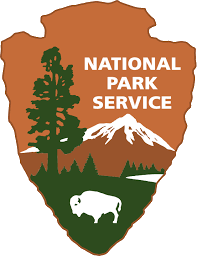Choosing Our Words
by Susan Hayase
Terminology
It matters what words we use. It’s not a question of political correctness but of taking the side of intellect and nuance in the face of forces that would obscure meaning. Articles that discuss terminology are listed below. Here I’ll write about how I came to understand the euphemisms for different sites of incarceration.
“Camp” and “Evacuation”
Like many sansei — grandchildren of the immigrant generation — I grew up knowing that my parents and grandparents had been to “camp.” Some of my parents’ friends had met and married in camp, some had gone to different camps, and there were stories about things that happened “after camp.” My parents also sometimes made references to “evacuation” which seemed to be a synonym for “camp.”
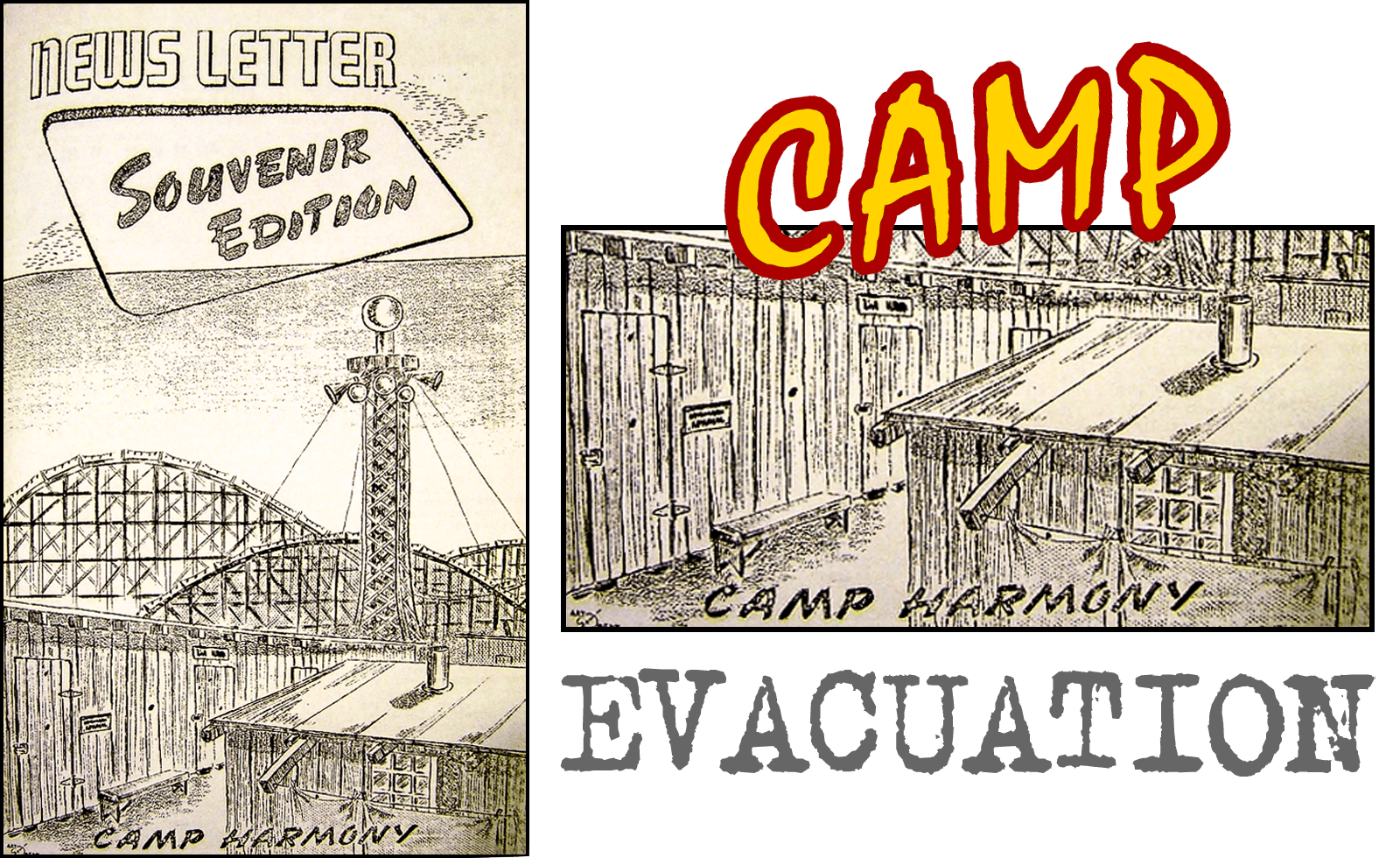
right: graphics added by David Izu 2018.
The incongruous view of what inmates called “rabbit hutch” living quarters with a roller coaster in the background is due to the siting of the Puyallup detention facility on the Western Washington Fairgrounds 35 miles south of Seattle.
In our family, this was normal and accepted but it was also a little mysterious. My white friends did not have similar family stories. I was reading my mom’s copy of Citizen 13660, the graphic novel written and illustrated by Miné Okubo, when I had an epiphany, the moment when I finally understood that my parents had been put in a prison camp, and I was so angry that I couldn’t see for a moment. The euphemisms had fooled me. I also remember the day one of my teachers confidently told me that the entire event hadn’t happened. I guess that the euphemisms and post-war rationales for imprisoning my parents had obscured the meaning for her, too.

In 1942, amid a firestorm of nationalistic, anti-Japanese rhetoric and hostility from their fellow Americans, Japanese Americans heard that they would be “evacuated” to “assembly centers” and later “relocated” out of their homes, out of areas defined by the U.S. Army as being in a “military zone.”
Should they have been alarmed? It sounded so benign.
I always wondered what it must have felt like when my parents discovered that “relocation centers” were concentration camps under armed guard with barbed wire, far from the coast. They couldn’t or wouldn’t describe that to me; their stories were unemotional and prosaic recitations of what “camp” had been like. The use of euphemistic phrases had covered up the reality of that historical episode, sparing the feelings of the American public, perhaps, but also tamping down the emotions of those who had endured this tragic history.
"Concentration Camps"
In 1998, the Japanese American National Museum in Los Angeles curated and installed an exhibition at Ellis Island entitled, America’s Concentration Camps: Remembering the Japanese American Experience. The term “concentration camps” was not contested in Los Angeles but an intense controversy erupted in New York before the exhibition opened. Some Jewish organizations as well as some Ellis Island officials objected to the use of the term “concentration camps” in reference to anything other than the WWII Holocaust in Europe.
One of the concerns was a fear that the horror of the Nazi death camps that killed an estimated six million Jews and other minority group members could be diluted if used in other instances. Other Jewish groups did not object or said that oppressed groups have the right to define their own history.
The curator, Karen Ishizuka, maintained that there was no intent to compare the wartime experience of Japanese Americans with that of Holocaust victims: President Roosevelt and U.S. officials at the time had routinely used the term to refer to the prison camps that incarcerated Japanese Americans. According to historian Eric Muller, concentration camps provide “arbitrary and indefinite confinement based not on guilt but on group membership.”
The Ellis Island exhibition finally opened with the original title after Japanese American community protests and interventions by Senator Daniel Inouye of Hawaii and Secretary of the Interior, Bruce Babbitt.
"Internment"
The most commonly-used term used today for the sites of incarceration is “internment camps.” But that is the legal term for camps which detain enemy aliens, not citizens.
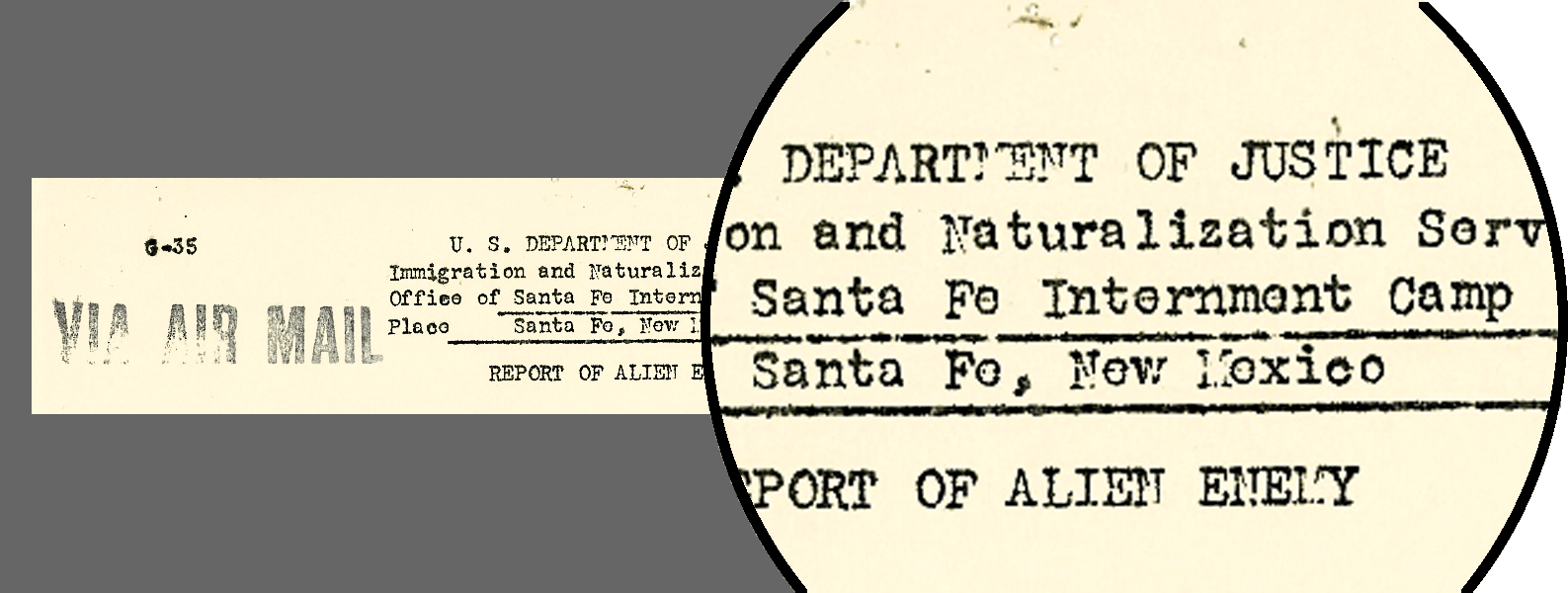
”Internment camp” is the most widely used by the public, even if it is technically wrong. More accurate terms include incarceration camps, concentration camps, prison camps or detention camps. The term “Japanese Internment Camps” is flat out wrong; it suggests that the camps were run by the Japanese government rather than the U.S.
"Citizen Isolation Centers and a Segregation Center"
Prisoners identified as “troublemakers” were incarcerated at “Citizen Isolation Centers” — smaller, separate, high-security camps that were run by the War Relocation Authority (a euphemism itself).
“Disloyals” who were identified by their answers on a questionnaire administered to all inmates age seventeen and older were sent to a “Segregation Center” at Tule Lake, which was actually a maximum security prison with three layers of barbed wire and patrolled by Army tanks and armed soldiers.
Neither “troublemakers” nor “disloyals” were charged with any violations, investigated, or allowed a defense, so maybe “prisoners” remains a more accurate term for them — just as “suspect” is the term for someone not yet convicted.
"Enemy non-aliens"
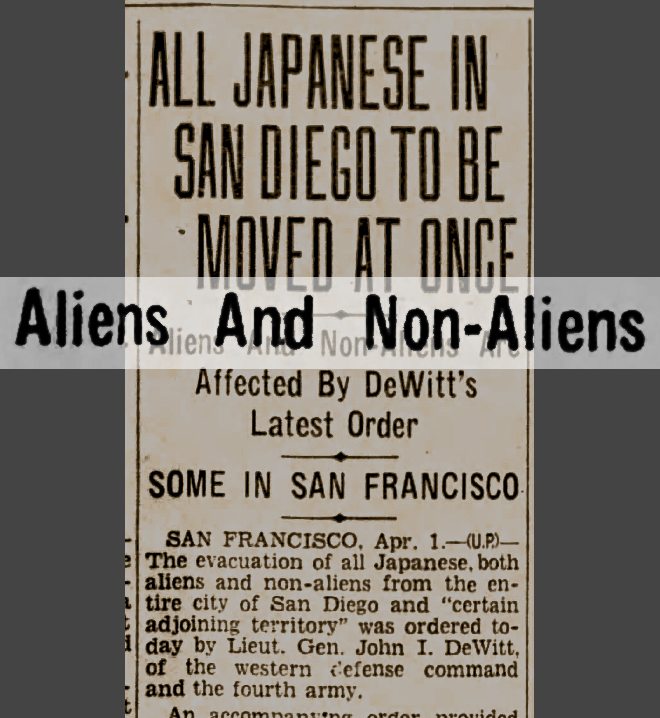
This is the most Orwellian phrase of all. An alien is a non-citizen; thus a “non-alien,” it follows, is a citizen. The government used linguistic gymnastics to avoid saying that American citizens — “non-aliens” — were being imprisoned without due process. One lesson is that anybody’s status is arbitrary and subject to bureaucratic and presidential whim. Terminology is changed for a purpose, something to bear in mind during these days in which terms such as “illegals” and “removable aliens” are increasingly used.
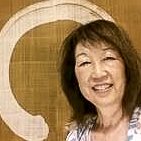
Susan Hayase is a long-time activist in the San Jose Japantown community. She was part of the JA redress movement as a leader in the Nihonmachi Outreach Committee and the National Coalition for Redress/Reparations, and was appointed by President Clinton to serve as the vice-chair of the Civil Liberties Public Education Fund Board from 1996-1998. She is currently working on projects for the Japanese American Museum of San Jose and the California History Center at DeAnza College.
Why “American Japanese”?
by Nancy Ukai
The usual term when discussing Americans of Japanese ancestry is “Japanese American.”
There’s the Japanese American National Museum, the Japanese American Citizens League and a Facebook page that protested an auction of camp artifacts: “Japanese American History: Not for Sale.”
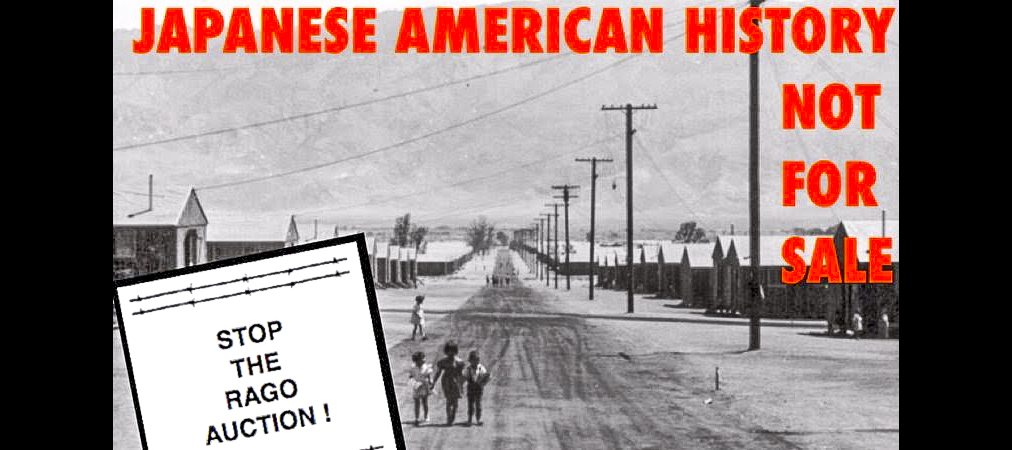
We chose to title this project differently.
We wanted to stimulate thinking about words, identity and perception. What does it mean when the racial/ethnic descriptor is placed first? Does the adjective have more impact?
Filmmaker Emiko Omori, who prefers the “AJ” term and was imprisoned at Poston, Arizona, as a child, says, “I want to be sure that people know that Americans were in these camps. I’m an American and I don’t want to be the ‘other.’ “
It’s an oft-stated fact that two-thirds of the 120,000 people who were incarcerated in the camps were U.S. citizens. We wonder, does putting “American” first in the term emphasize that a majority of the imprisoned were citizens of this country?

courtesy of the Willamette Heritage Center.
Toru Saito, a survivor of Topaz, Utah, asserts the origin of his civil rights. “Our rights are from the American Constitution. We should call ourselves American Japanese.”
But the second word could be considered more important because it is the noun. The first word, an adjective, only modifies it.
This is not a new debate. The meanings and implications of identifying as Jewish American or American Jewish, for example, provoke lively discussion. https://shul101.wordpress.com/2008/01/11/american-jews-or-jewish-americans/
We’re intrigued that a marketing survey found that focus groups, when presented with the terms “Muslim American” and “American Muslim” thought that the former term elicited images of being “foreign” and “strict” while the latter called up positive images: “came to America for a better life” and “contribute to society.” Word order may matter.
Antonio Kouroutakis uses a standard in his legal research. The name of the country where the passport is issued comes first, the ethnicity second, hence: Australian Greek.
We don’t expect our community museums to start making new signs anytime soon. And we wish to be seen as human beings first, not as representatives of a socially-constructed category.
But labels are a reality as well as an opportunity. We advocate for stepping outside the accepted wisdom sometimes. On this website, we’ll use various terms.
Terminology References
Aiko Herzig-Yoshinaga
Words can lie or clarify: Terminology of the World War II Incarceration of Japanese Americans*
https://www.nps.gov/tule/learn/education/upload/Words_Can_Lie_or_Clarify.pdf
Roger Daniels
“Words do matter: A note on inappropriate terminology and the incarceration of the Japanese Americans.”
https://www.nps.gov/tule/learn/education/upload/RDaniels_euphemisms.pdf
Power of words handbook: A Guide to language about Japanese Americans in
World War II
https://jacl.org/wordpress/wp-content/uploads/2015/08/Power-of-Words-Rev.-
Term.-Handbook.pdf
Densho: Terminology
https://densho.org/terminology/
Credits
Cover Photo:
“Right-side Gospel Door at the Passion Facade of the Sagrada Família”, David Izu, 2016.
Supported in part by a grant from the National Park Service,
Japanese American Confinement Sites program
